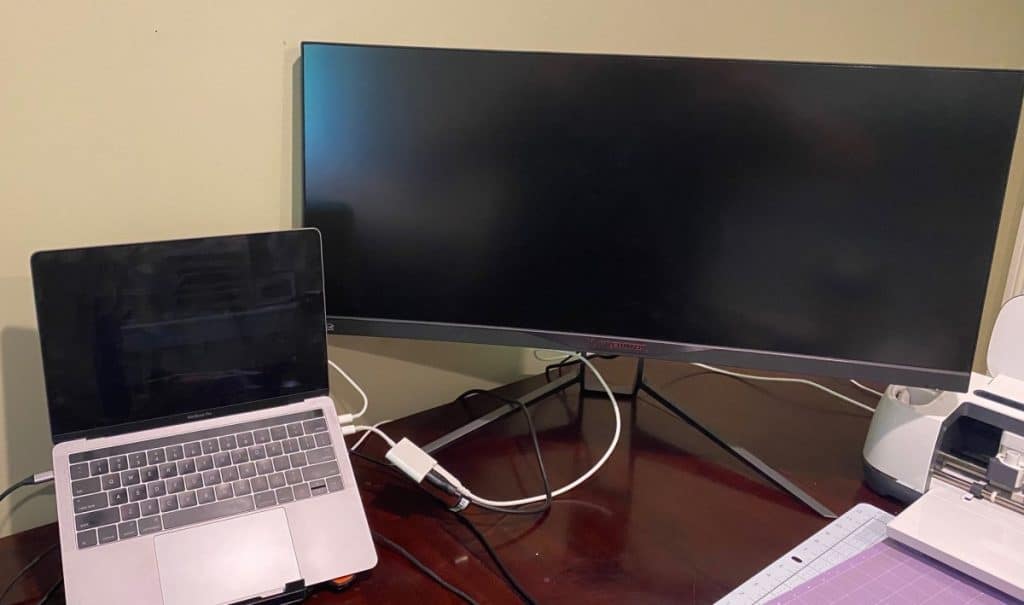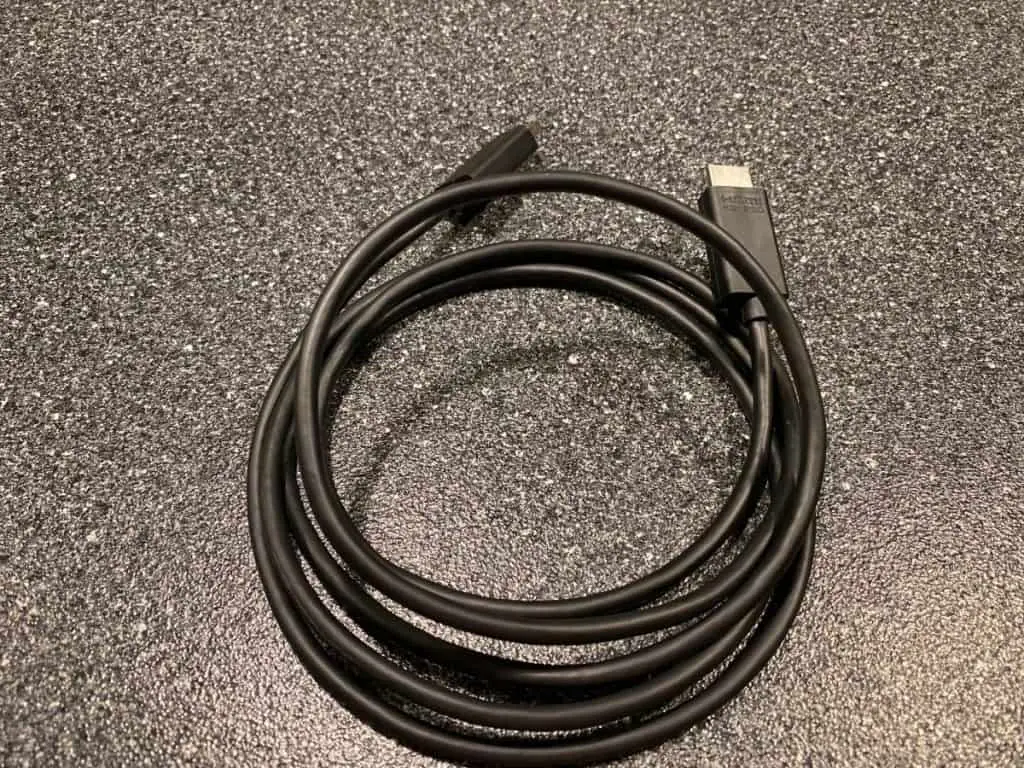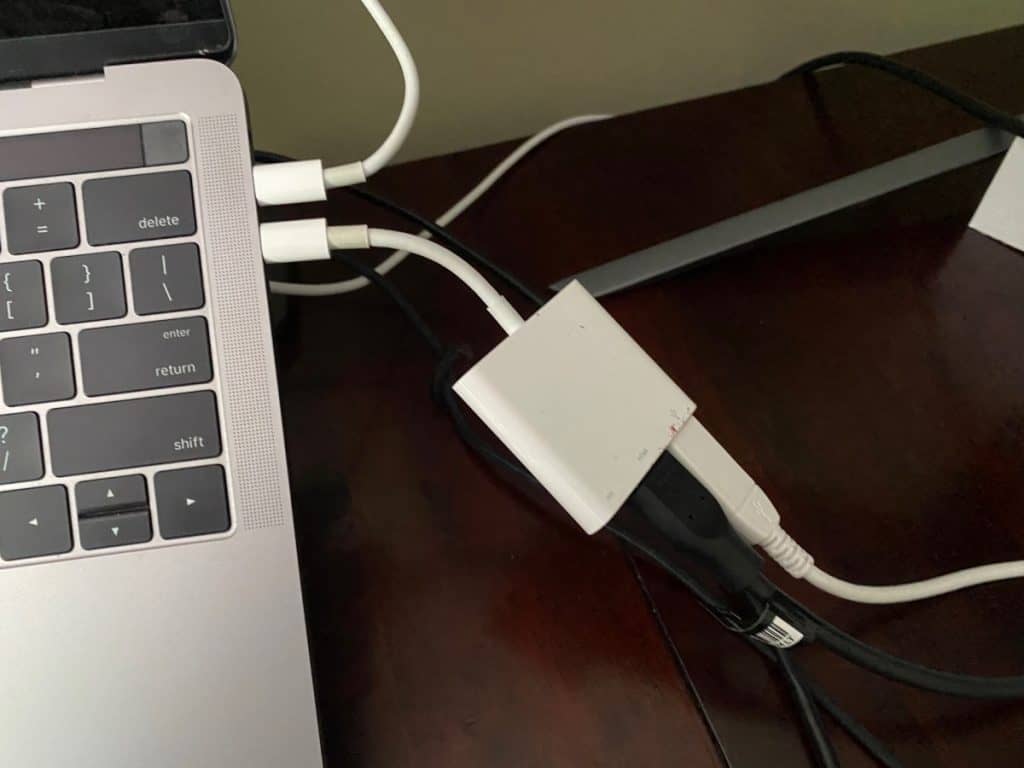It isn’t uncommon for people to want to connect their laptop to a monitor because monitors are bigger and better when it comes to the overall viewing experience that you can get. Monitors will make it easier for you to game or watch movies using your laptop because of how bigger and better-designed they are for gaming and entertainment. And those who would want to multi-task may also want to connect a laptop to the monitor. But can you connect your laptop to the monitor?
You can connect your laptop to the monitor. You can do so by using your laptop’s HDMI port to connect it to a monitor using an HDMI cable. Some of the newer laptops may need a hub with an HDMI port to do this. Meanwhile, there are some older laptops that may have a VGA port so that they can connect with a monitor.
You cannot really say anything wrong with connecting your laptop to a monitor if you are simply at home wanting to play games, watch movies, or use a separate monitor for multi-tasking. After all, a bigger monitor will allow you to do more things and see everything better. That’s why you may want to know whether or not you can connect your laptop to a monitor and how you can do so.

Can you connect your laptop to a monitor?
It isn’t a secret that laptops come with their own screen or display because they basically cannot function without one. The dedicated screen that laptops come with has allowed them to become quite portable and handy because you can just basically carry the laptop anywhere if you want to work remotely or watch videos or play games while you are traveling.
However, just because your laptop already comes with a screen doesn’t necessarily mean that you have no use for a separate monitor. The fact is that laptop screens are generally smaller because laptops are meant to be compact and portable. After all, you wouldn’t want to carry around a laptop that has a 20-inch monitor because this defeats the purpose of it being portable enough to be carried around. That’s why most laptop screens nowadays max out at 17 inches.
Still, there is some use for a screen that is bigger and built for productivity, creativity, design, gaming, or entertainment. Technology has improved so much that we have monitors that are so amazing that they have great colors and brightness for designers, quick response times for gamers, and the best resolutions for watching movies. As such, using a monitor can make things a lot better for people using their computers as most monitors are not only big but are generally better than the compact screens that laptops come with.
That said, there might be some people who may want to use monitors instead of their laptop screens whenever they are simply working at home or in the office or are just looking to play games or watch movies with a larger and more responsive screen. So, can you connect your laptop to a monitor?
Generally, yes, you can connect laptops to a monitor. But there is still a catch here because some laptops may not be able to do this because they lack the proper ports that would be able to allow them to connect to a monitor. However, in general, most of the laptops we have today support monitor connections. So, it’s going to be quite rare to find a laptop that can’t be connected to external monitors.
How to connect the laptop to a monitor?
So, if you are looking to connect your laptop to a monitor, here are the things you need to know:
How do I connect my laptop to a monitor with HDMI?
Connecting your laptop to a monitor using HDMI may not be as straightforward as you might think it is because not all laptops support HDMI connection or are capable of connecting to a monitor via HDMI. However, most standard laptops today are capable of HDMI connection. That said, here are the things you need to know first to determine whether or not you can connect to a monitor via HDMI:
- Check if your laptop supports HD resolutions. This can be seen in the laptop’s display options or in its video card or GPU settings. Most laptops manufactured over the past decade should support HD resolutions but older ones probably can’t.
- If your laptop comes with its own HDMI port, things become straightforward. If it doesn’t come with an HDMI port, it’s either because it can’t handle HD displays or because it needs a separate dock or hub to connect to a monitor via HDMI. If your computer can’t handle HD resolution, it can be connected to a monitor using VGA instead of HDMI.
- Smaller laptops may come with a micro-HDMI port, which is essentially the same but only smaller. That’s why you need to use an HDMI cable with the standard HDMI head on one end and a micro-HDMI head on the other end.
- Check the monitor if it has an HDMI port. Most monitors today should have an HDMI port but the older ones that may have been manufactured over a decade ago may not have this but, instead, require a VGA cable.
So, if you have a laptop that has an HDMI port, all you need to do is the following:
- Connect one end of the HDMI cable to the HDMI port of your laptop.
- Connect the other end of the HDMI cable to the HDMI port of the monitor.
In some cases, the connection happens automatically. However, in some laptops, you may need to enter the system’s display settings to switch your laptop’s display over to the monitor. You can do this by going to the Windows settings, choosing System, and then choosing Display. For Mac users, you should open System Preferences and then choose Display.

How do I connect my laptop to a monitor without HDMI?
If your laptop doesn’t come with HDMI or if you don’t want to use HDMI, you can use the following options:
- Use a dock or a hub
Some laptops today are so compact that they lack a lot of different ports. This can be common in slim laptops that come with USB-C ports. In such a case, you may need a dock or a hub that comes with an HDMI hub. If you do get your hands on one, things become straightforward as you only need to connect the dock or the bub to your laptop and then connect the HDMI cables to the dock or hub and the monitor (see How do I connect my laptop to a monitor with HDMI? above).
- Wireless connection
If you don’t have an HDMI cable or even HDMI ports on your newer laptop, you can connect to your monitor or TV wirelessly. However, there is a catch here because you would need an Apple TV if you have a MacBook or Roku streamers or a wireless display adapter if you have a Windows laptop. The good news is that, for Windows laptops, there are some TVs that you can use as monitors because they have wireless display connection capabilities.
For Apple users:
- You can use the AirPlay option that will allow you to connect your laptop to an iPad or a monitor that is connected to Apple TV.
- As long as you are using the same wireless connection, you can go to System Settings, Display, and then find the AirPlay option at the bottom of the window.
- Click the AirPlay option to toggle it on and then select the monitor you want to use.
For Windows users:
- Select the Start Menu, then select Settings.
- Select System.
- Select Display on the left.
- Select Connect to a Wireless Display. This will begin the scanning for a compatible wireless display.
- Choose the TV or monitor that you want to connect to as long as you are both connected to the same wireless connection.
- Once connected, your laptop should now be mirrored to the TV or monitor.
- Using DVI or VGA
Older laptops that don’t have HDMI may have DVI or VGA ports. The DVI port can be used for HD monitors so long as you have a DVI to HDMI cable.
However, VGA is analog and cannot be converted to digital. That’s why you can only use a VGA cable to connect your laptop to a monitor if the laptop doesn’t support an HDMI connection. You also need to make sure that the monitor has the correct port that supports VGA connection.
- Connect the DVI or VGA cable to the correct ports found on the laptop.
- If you are using a DVI to HDMI cable, connect the HDMI head to the monitor.
- Those using VGA cables should connect the right color-coded cable to the same VGA port found on your monitor or TV. However, newer monitors and TVs no longer support VGA connections.
How do you connect a monitor to a laptop and use both screens?
What if you want to use both your laptop screen and your monitor screen at the same time? Well, this is possible using any of the methods we stated above. After you connect your laptop to your monitor using any of the abovementioned methods, all you need to do is to tinker with the settings.
For Apple users:
The good news for Apple users is that the second-screen option is the default because Apple MacBooks don’t support exclusive screen displays for monitors. You have a choice of either mirroring your laptop’s screen to the monitor or using the monitor as a second screen. Here’s how you do it:
- Go to System Preferences.
- Look for Displays and then click on it.
- You should be on the Displays option where you can choose the type of display you want while using your monitor. The choice boils down to screen mirroring or using your monitor as a second screen, which should be the default for MacBooks.
For Windows users:
- Select the Start Menu, then select Settings.
- Select System.
- Select Display
- In Display, you should be able to see the option where you can choose to use the monitor as a second screen, as the main screen, or as a mirror screen.
- Choose the second screen if you want to use both your laptop’s screen and your monitor’s screen.
Is it bad to connect the laptop to the monitor?
So, if you are wondering whether or not it is bad to connect your laptop to a monitor, don’t worry because there is nothing wrong with doing so. Nothing bad will happen to your laptop or to your monitor if you were to use your monitor as your laptop’s screen. In fact, this will make it the equivalent of a desktop computer if you have a separate keyboard and a mouse that you can use.
However, keeping your computer on for a long time will still likely damage its dedicated screen even if the laptop’s display is turned off because you are using the monitor as the main display. That’s why it still is important to rest your laptop even if you are not using its dedicated screen.
Can I use a USB port to connect to a monitor?

What if you don’t have an HDMI port on your laptop? Can you use your USB port to connect to a monitor instead? Well, the answer can go both ways here.
First of all, if we are talking about a USB-to-USB connection, then you cannot connect your laptop to a monitor that way even if the monitor does come with a USB port.
Second, if we are talking about a USB-to-HDMI connection, then it is possible for you to use your USB port as a way to connect to your monitor. However, as we mentioned above, if your computer does support HD resolutions but doesn’t come with an HDMI port, you should go get yourself a dedicated USB dock with an HDMI port.
This is quite common in newer laptops that only have USB-C ports. All you need to do here is to connect the dock or hub to the laptop’s USB port and then connect the HDMI cable to the HDMI port on the dock and to the HDMI port found on your monitor.
